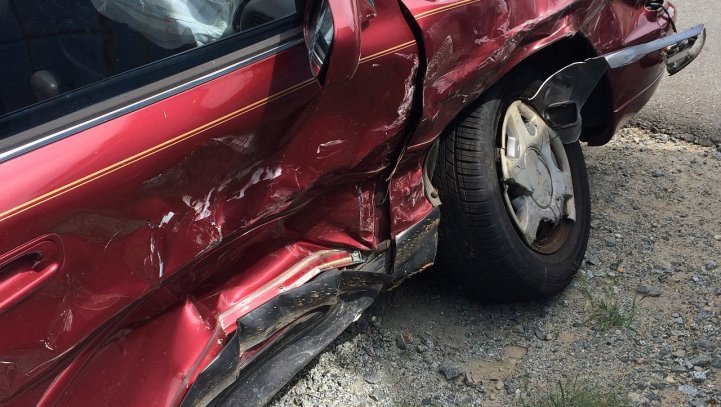GET IN TOUCH
Please contact us for more information. Our email is monitored seven days a week and we will get back to you shortly.

Most people’s livelihoods depend on their ability to get from home to the workplace, and back again, and many people are affected by accidents that occur while on a roadway, either as a motorist, a cyclist or a pedestrian. In this blog post I will provide an overview of the accident benefits available to people injured in a car accident in BC through ICBC claims.
The simplest way to explain how motor vehicle ICBC claims are handled is to divide them into two categories: (1) accidents that you are at fault for, and (2) accidents that someone else is at fault for. When you are injured in a vehicle accident that is your own fault, the Insurance (Vehicle) Act requires ICBC to pay you minimum mandatory benefits regardless of your fault for the accident. These are called “no-fault benefits”. On the other hand, when you are injured and someone else is at fault (even partly) you can claim no-fault benefits, but importantly, you can ALSO claim under the other driver’s insurance policy for any compensation that is not provided by your own “no fault benefits”. These ICBC claims against the other driver are called “tort claims”. This is an important difference because the benefits provided by your own no-fault insurance (as described below) are minimal compared to the benefits you are entitled to from the insurance policy of the other driver by making a tort claim.
Your No-Fault Benefits: No-fault benefits are available to you even if you cause an accident, for example, you slide off the road and crash into a tree and break your leg, or you rear-end someone and hurt your neck. No-fault benefits are provided to anyone who is injured as a result of the “operation of a motor vehicle” in BC, whether they are in the vehicle or not (you might be a pedestrian or a cyclist struck by a vehicle). However, in order to qualify for no-fault benefits you must either have a B.C. driver’s licence or live with someone who does. At law, ICBC must provide up to $150,000 in no-fault benefits. Sounds good, right? Unfortunately, no-fault benefits are more limited than they sound and are restricted to two primary forms: temporary wage loss supplements, and partial rehabilitation benefits.
If your injuries cause you to lose time at work, no-fault benefits only pay up to (a maximum of) $300 per week of lost wages. However, they will only pay this if all other sources of income replacement (EI, CPP, short or long term disability) have not already replaced 75% of your pre-accident income. For example, if you were making $1,200 per week prior to the accident, and after the accident your short term disability was paying you $800 per week, ICBC would only pay you an additional payment of $100 per week, for a total of $900 per week. In many cases, this shortfall makes it tough to pay the mortgage, buy groceries and cover other family expenses. Also, this temporary wage loss replacement only lasts for 104 weeks before it is permanently terminated.
In addition to some temporary wage loss replacement, no-fault benefits also provide limited rehabilitation expenses (again, part of the global $150,000 cap on no-fault benefits). These expenses are largely at the discretion of ICBC, although, they are intended to be funded whenever “medically necessary”. Rehabilitation expenses may include physiotherapy, massage, chiropractic and other medical treatments. No fault benefits also provide funding for an injured person’s inability to care for themselves (nursing care) as well as caring for their household (for example, yard work). Obtaining approval for payment of these benefits can be difficult and where they are improperly denied, the only recourse is to sue ICBC for breach of your no-fault benefits. Unfortunately, this is common.
Your Tort Claim: a “tort claim”, refers to the ability to sue someone for your losses caused by their negligence. In a motor vehicle accident caused by another driver, or at least partly caused by another driver, you have a tort claim against them (which their insurance will cover) to the extent they are at fault. The amount of compensation available to you will depend on the extent of your injuries, what effect they have on your life, and the amount of insurance carried by the other driver. Most drivers carry at least $1,000,000 in insurance (per collision). However, if a person owns significant assets (such as a house) in the same name as the vehicle driven by them, I recommend carrying at least $2,000,000 in insurance for the additional cost of about $75 per year.
Importantly, in a tort claim the types of compensation you can claim are not limited by the same categories as under your own no-fault benefits. Remember, you are suing the other driver for their negligence (which is why they have insurance in the first place), and you are entitled to be put in the same financial position you would have been in had the other person not injured you. As a result, you are entitled to payment for all of your lost wages, your medical expenses, your future loss of earnings due to disability, as well as the pain and suffering for the general effect that the injuries have on your life. While the prospect of going to court often deters people from making a claim, it should be known that most people are able to get fair compensation through negotiation and more than 95% of cases settle out of court.
Darren Williams is the Principal Lawyer of League and Williams (LaW) and has handled over 1,200 motor vehicle claims for injured parties in 15 years. He is a lawyer specializing in injury law, estate disputes and marine law at League Law Corp, in Victoria, B.C., Canada and can be reached for comment at info@leagueandwilliams.com or 250-888-0002.